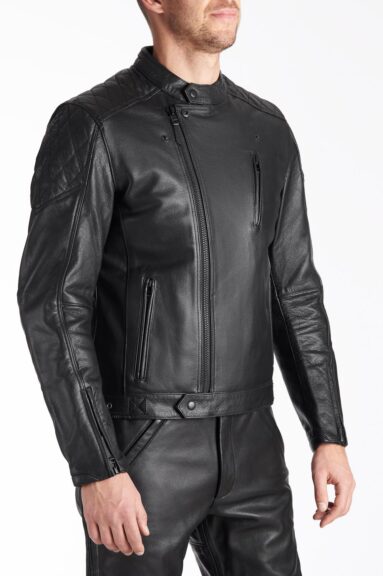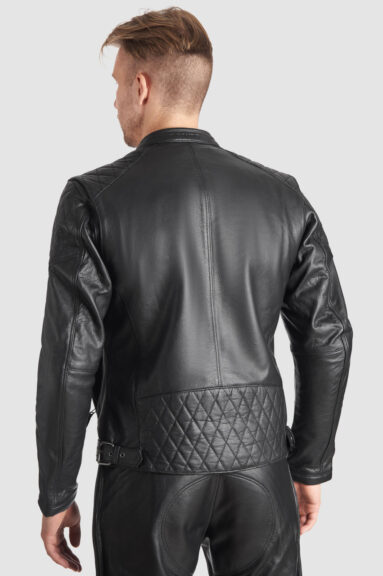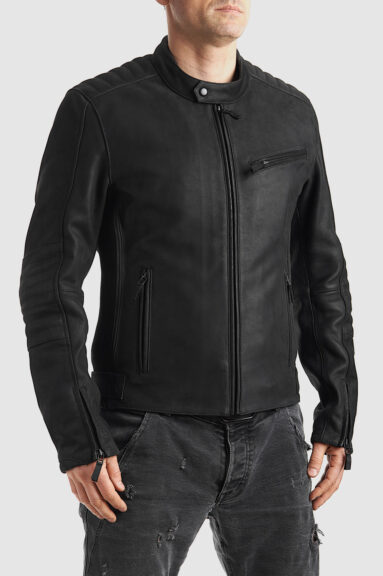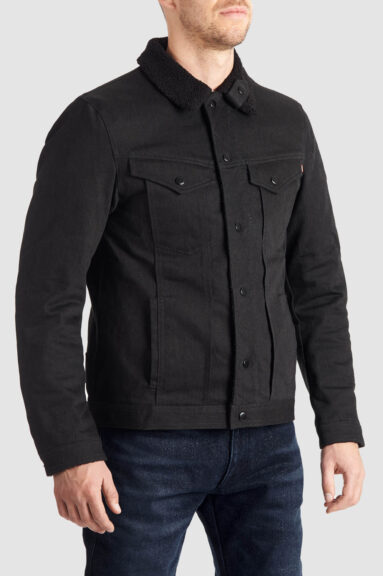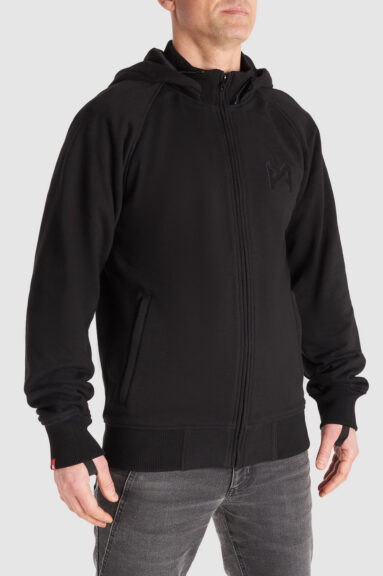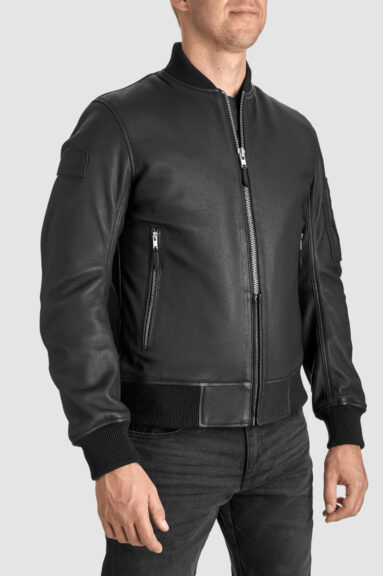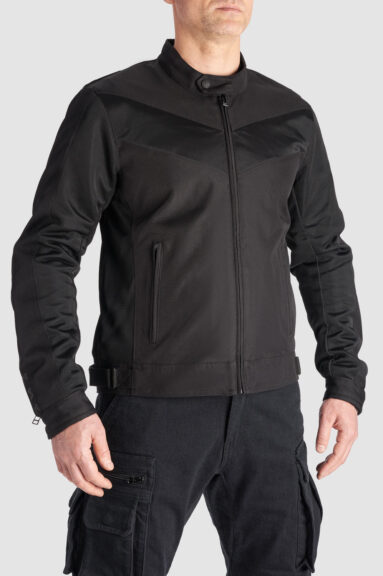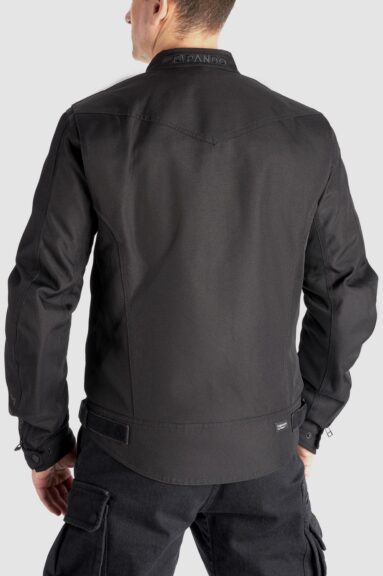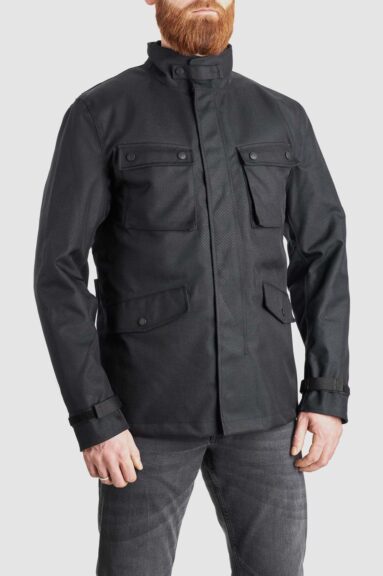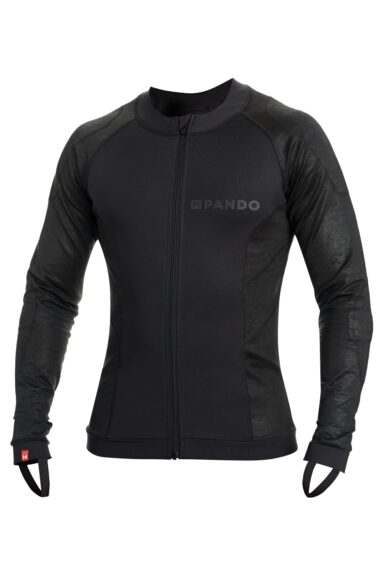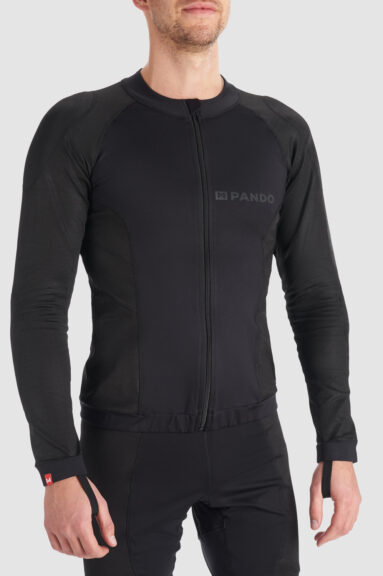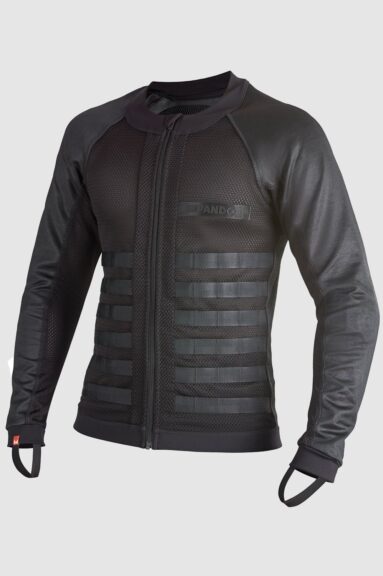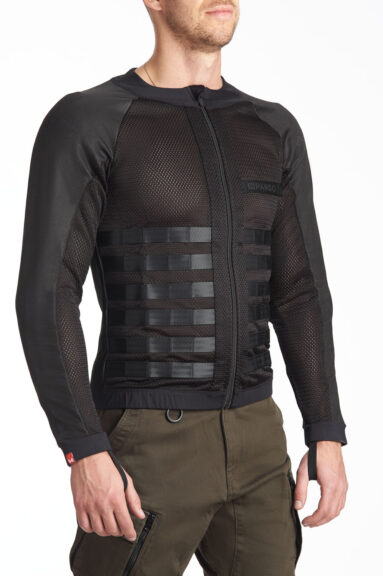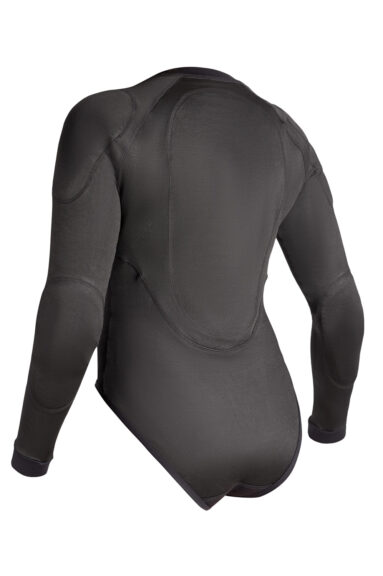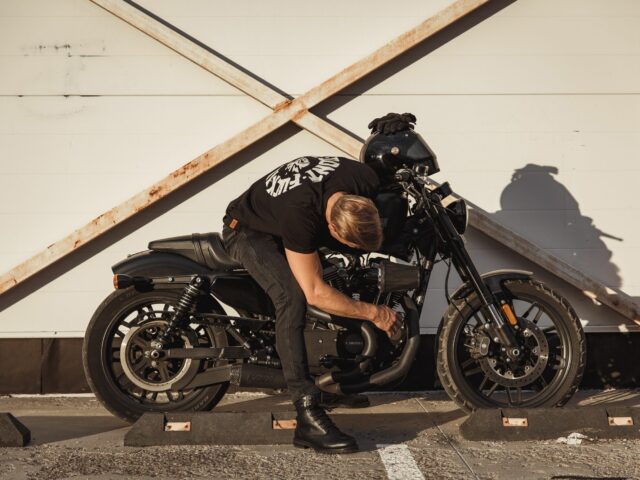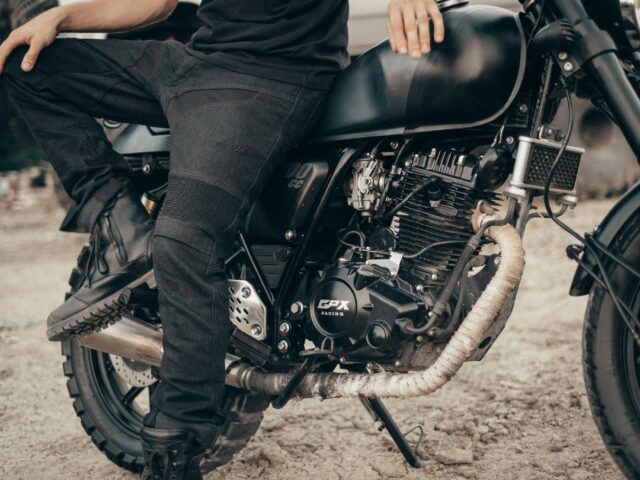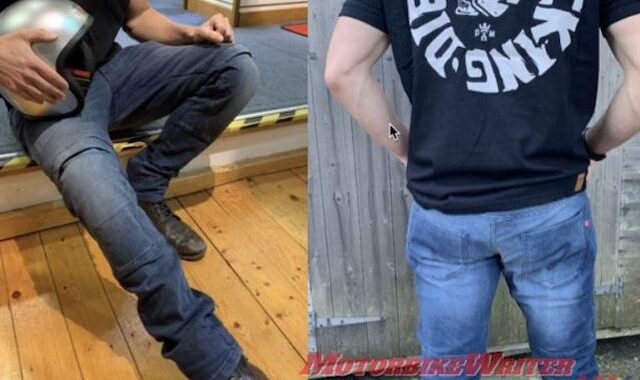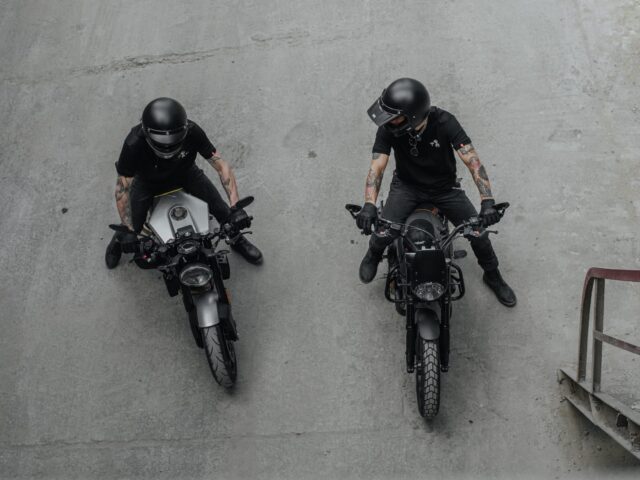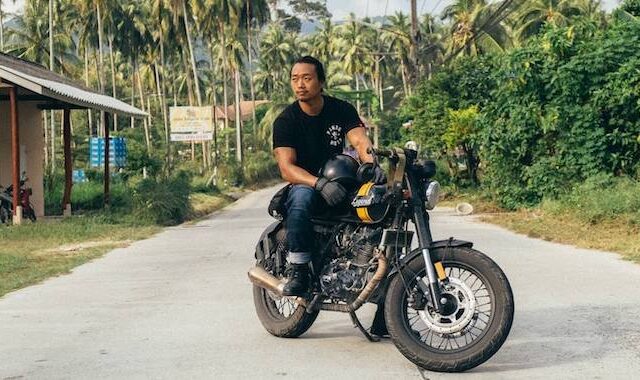What to Look for When Choosing a Motorcycle Jacket
November 05, 2024
Of all the riding gear you could buy, your jacket is probably the most iconic, statement making piece. But with so many different types of motorcycle jackets out there, it can feel overwhelming to know how to choose the right one for you. Do you go for the classic leather look, or is a high-tech textile jacket more your speed?
In this guide, we’ll break down everything you need to know about choosing the perfect motorcycle jacket, taking into consideration Pando Moto’s core values of safety, functionality and style.
1. Find a motorcycle jacket that’s safe
Safety should always be your top priority when choosing the best type of motorcycle jacket. This isn’t just about looking good; it’s about making sure you have the protection you need if you ever hit the pavement. When choosing a new jacket you need to keep this in mind, and ensure you’re looking at high quality options with appropriate protection and safety ratings.
Materials
Starting at the most basic level, the material a motorcycle jacket shell is made of must be robust, able to withstand a certain amount of abrasion and tearing. Today, most motorcycle jackets are made of leather or a high tech textile that’s suitable for this application.
Leather
When made correctly leather riding jackets are incredibly durable and offer high abrasion resistance, something that’s critical if you ever find yourself sliding down the road.
Something important to look at is the thickness of the leather. If it’s too thin, the protective properties may be compromised, while too thick can be unwieldy to wear, restricting your movement. The sweet spot is often considered to be between 1.2 mm to 1.4 mm. A prime example of a well-made leather motorcycle jacket is the Pando Moto Twin Leather Jacket Black, which is made of 1.2 mm thick black Buffalo leather and has a range of clever functional inclusions.
Textiles
Thanks to developments in textile technology, modern fabrics can be incredibly tough while looking good and feeling lightweight. Jackets made of these materials are generally lighter than leather and look different style wise (check out this Sherpa trucker style Husky Jacket Black), but still offer high levels of abrasion and tear resistance.
There are a wide range of textiles that are appropriate for use in motorcycle apparel, including Cordura, Armalith and Balistex.
- Cordura has military-grade INVISTA T420 nylon 6,6 staple fiber woven with cotton which creates a denim look fabric with greater abrasion resistance and durability
- Balistex is a combination of spandex and new generation UltraHigh Molecular Weight Polyethylene (UHMWPE) that’s also used by law enforcement and the military
- Armalith takes UHMWPE and combines it with cotton fibers to create a denim that has the mechanical qualities of leather
As new textiles are developed there’s no doubt some of them will find their way into the motorcycle apparel industry. If you come across any you don’t recognize it’s a good practice to research it and double check that it’s fit for purpose.
Armor
When you’re buying a motorcycle jacket look for one with armor inserts in the key impact areas; shoulders, elbows, and back. These are the spots most likely to take a hit in a crash, so you want to ensure they’re well protected.
Within the Pando Moto range all riding jackets come with shoulder and elbow protection, and back inserts are an option you can add-in as well. The armor is integrated into the design in a way that’s functional and safe, but also stylish, with the use of highly protective yet low profile armor.

Impact protection and durability
Beyond the type of fabric used to construct the jacket and the placement of armor, consider the overall build quality.
- Is it double stitched?
- Are there reinforced panels in high impact areas?
- Are the closures high quality fasteners from reputable brands like YKK?
A jacket made of the best fabric with good armor can become useless if the stitching rips or zip opens, so these factors can significantly affect how well a jacket holds up in a crash.
Reflective elements
If you often ride at night then a jacket with reflective strips or piping are a great safety feature, making you more visible to other road users. Some of the Pando Moto range has this incorporated into the logo design, creating a chic way to remain visible.
Aesthetically though, it may not suit you to have reflective piping on your jackets all the time, especially if you love the look of a classic motorcycle jacket. If this is the case there are alternatives such as wearing a High-Vis safety vest, adding a backpack with reflective piping or choosing a helmet with reflective details for your night rides.

CE Ratings
You’ll often see motorcycle jackets that are CE rated, which is a European standard for safety ratings. It lets you know that the jacket has been independently tested and certified as being able to pass certain safety and design requirements, so you’re not just relying on the manufacturer’s say so.
All jackets sold by Pando Moto have been officially CE approved as PPE under EN 17092, which means they can withstand at least 6.7 seconds sliding time or 92 m sliding distance. Further to that, they’re rated to different levels based on how they performed during the testing.
- Level A
- Level AA
- Level AAA
During the evaluation process the outer shell of the jacket is tested for its abrasion resistance, tear resistance and seam strength. Higher ratings of Level AA and Level AAA are accredited to designs that meet the performance requirements at higher simulated crash speeds.
2. Make sure the type of motorcycle jacket is functional for you
As well as having a jacket that’s safe you also need one that functions for you, meeting the needs of your riding style, personal preferences, body type and local climate.
Climate considerations
Where you ride plays a big role in what type of jacket you need. The demands of a hot and dry country are very different to the tropics or somewhere it snows.
Ventilation
If you’re riding in warmer climates, ventilation is key. Look for jackets with zippered vents that you can open to let air flow through, or cooling perforations under the armpits. Features like this can make a huge difference in your comfort level during a hot or humid ride.
The Phantom Moto Hoodie Black is a cool example of how ventilation can be incorporated into a motorcycle jacket to make it suitable for all weather, all season riding. It has a double zipper feature that allows it to be closed in two different ways. When the weather is cold you can zip a solid panel of fabric closed, but when it’s hot simply use the other zipper to expose a mesh strip with ventilation 3000.
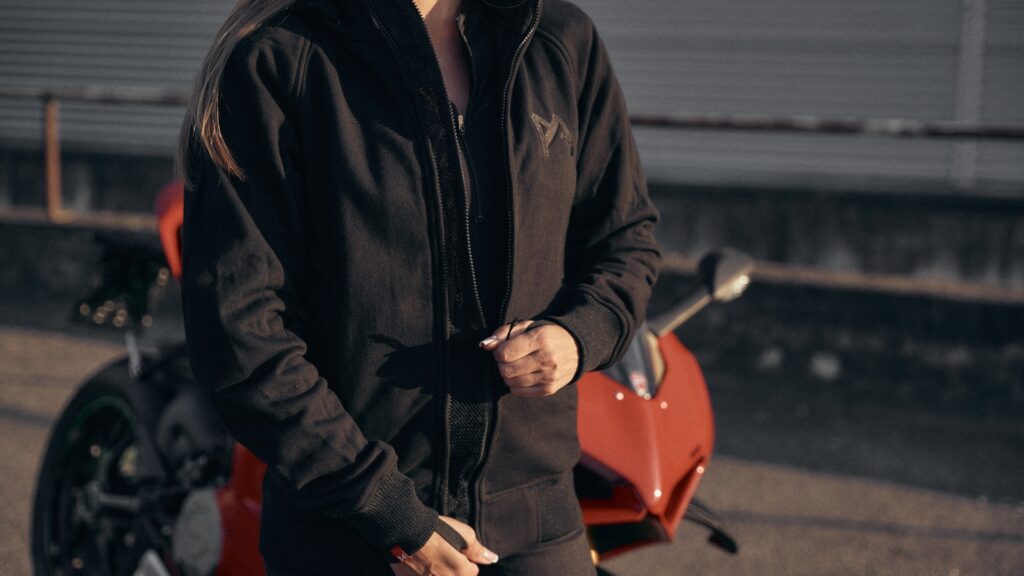
Removable liners
A removable liner allows you to adapt your jacket to different weather conditions. This can be particularly useful if you’re riding in varying climates, for example northern Europe where it can be warm in summer and freezing in winter.
There are a few different types of removable liners. Some, like what’s incorporated into the Falcon Leather Aviator Jacket, are a quilted lining for thermal insulation designed to keep you warm when the temperatures drop, then remove when the sun comes out. Others are waterproof inner liners to keep you dry when the weather is not. The Air Tate Jacket Black has this feature, with the inner liner having sealed seams, waterproof YKK zips and being rated to waterproof 10000 and breathability 3000. The benefit of this particular jacket liner is it can also be detached and worn on the outside if you prefer.
Waterproofing
Some jackets are designed to be waterproof which can be handy if you live somewhere that experiences frequent rain throughout parts of the year. Along with a jacket being waterproof, you also want to make sure it’s breathable to prevent you from overheating or the inside of the jacket getting too sweaty.
The Pando Moto M65 WP Jacket Black is a good example of a jacket that’s successfully met the requirements to be a multifunctional, waterproof piece of apparel. It’s made of Cordura with a TPU membrane that’s waterproof 10000 and breathable 4000. The inside has a removable thermal liner meaning it can be used in tropical rain as well as snow. All of the seams are sealed and the front pockets have rubberized snap closures as well. All of this combines to make a waterproof jacket suitable for wet weather in all temperatures.
Sizing and fit
A jacket that doesn’t fit right is almost as bad as not wearing one at all. Fit is crucial not just for comfort and functionality, but also for safety.
Before you buy, make sure you know your measurements. Jackets should fit snugly but not be so tight that they restrict movement. Having a wide range of sizes available is a plus, with Pando Moto offering motorcycle jackets in sizes XS through to XXXL. Also, look for jackets with adjustable features like waist straps, cuffs, and collars. These can help you fine tune the fit to your body. Remember, a good fit helps keep the armor in the right place during a crash.
Depending on the weather, you might want to add or remove layers under your jacket. A jacket that has enough room for layers without being too loose when worn with a riding t-shirt can be good for this.
Additional features to consider
Think about any other extra features a riding jacket could have that would add convenience and comfort to your ride.
Pockets
Pockets are more important than you might think. Consider how many you need and where you want them. Do you prefer zippered pockets to keep things secure, or are you fine with open pockets for easy access?
Hoods
On the bike you’ll be wearing a helmet but what about off? It may be worth getting a jacket with a detachable hood like the Phantom Moto Hoodie Black.
Connection loop
Some jackets come with a loop to connect the jacket to the trousers to prevent it from riding up while you’re out on the bike. Could this feature fit with the style of riding you do and the types of clothes you wear under your riding gear?
Zippers and closures
A good zipper can make or break a jacket. Look for durable, smooth running zippers that are easy to use even with gloves on. Also, consider closures at the wrists and neck to keep the wind out.
3. The right style motorcycle jacket
Let’s face it, style matters. You want to look and feel good while riding, with the jacket fitting your overall aesthetic.
In a word, the Pando Moto range is chic. Each piece is designed by riders with the modern adventurer in mind, and is centered around the concept of SFS. Throughout the range there are various styles of jackets, from the traditional leather aviator or motorcyclist design, to casual hoodies and sherpa truckers. Regardless of the design you choose, be reassured they’re high quality and look good out on the road.
Jacket alternatives
If you’re looking for a protective layer that’s not necessarily a jacket, consider wearing a base-layer instead. These lightweight protective shells come with armor and can be worn by themselves or under other clothing.
Pando Moto has a couple of base layer designs made using Balistex, which is a high-heat conducting fabric that’s 15 times stronger than steel. The simpler design is the Shell UH 03 protective motorcycle base layer / shirt which has low profile protection, and is rated to performance Level AA under the CE standards mentioned earlier. For greater functionality, the Commando UH Black design has double layer sleeves, a pouch attachment ladder, silicone taped hems and is performance Level AAA.
The takeaway
Choosing the right motorcycle jacket is about ensuring your safety and comfort on the road. By considering factors like protection, material, fit, style, and extra features, you can find a jacket that ticks all the boxes. So, what are you waiting for? Check out the Pando Moto range, find your perfect jacket and hit the road with confidence.
